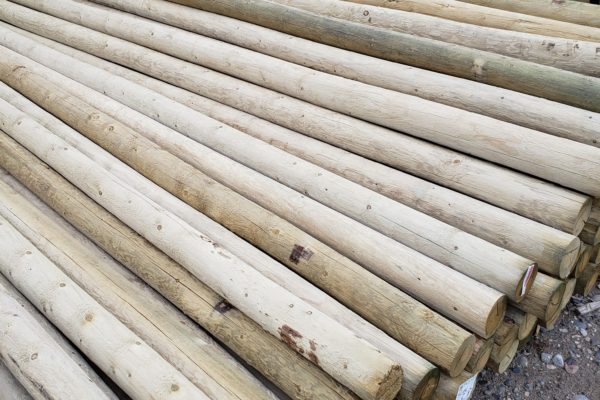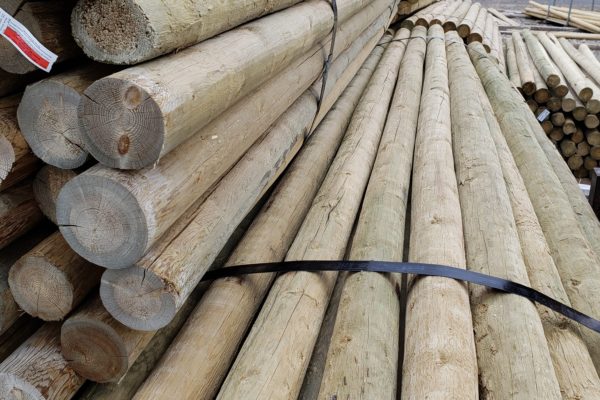Rails can be mounted either on top of the post as a cap rail, or on the face of the post – either butted end-to-end or lapped over the adjacent rail. Unless a rail plate is used, butted joints aren’t quite as strong. They do, however, give a smooth flowing line to the fence. If you’re installing mesh on the fence framework, a cap rail will give a continuous height on top to staple the top of the mesh. Lapped joints make a slightly stronger and more easily installed fence.
Doweled-pressure treated pine rail fence gives more of a formal and finished look to your property. The rail end is turned to a peg which fits into drilled posts. It’s easy to install mesh on this type framework since the top rail is at a constant height above ground. For maximum strength, we use rails with a 2 ½” doweled end. When installing this fence, post hole spacing is critical since the rails are all a fixed length – usually 8 or 10-feet.
Doweled rail gates are available to match the fence. While attractive, they are a lot heavier than some other gate options. We like to use a ground pivot pin set in concrete with an adjustable top ring for a hinge set on the larger gates. It is hard to beat the rustic appearance of a rail gate on a heavy driveway log archway.
People often ask about problems with repairs of broken rails but it’s seldom required. By pulling a post out vertically, a new rail can be fitted and the post re-tamped in the original position.





